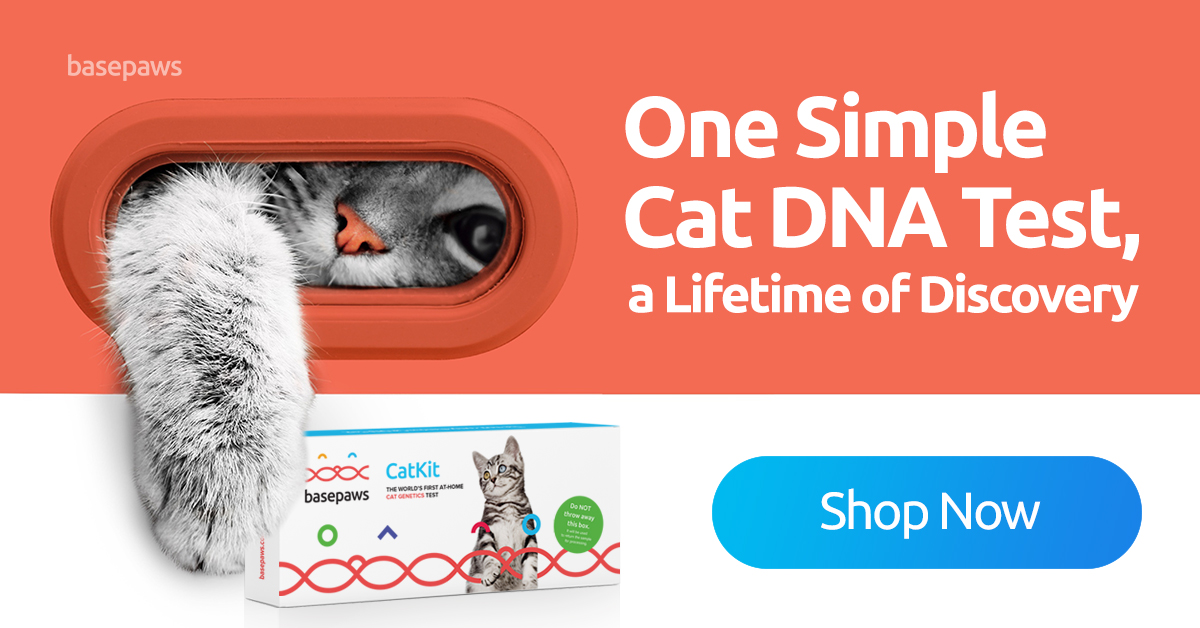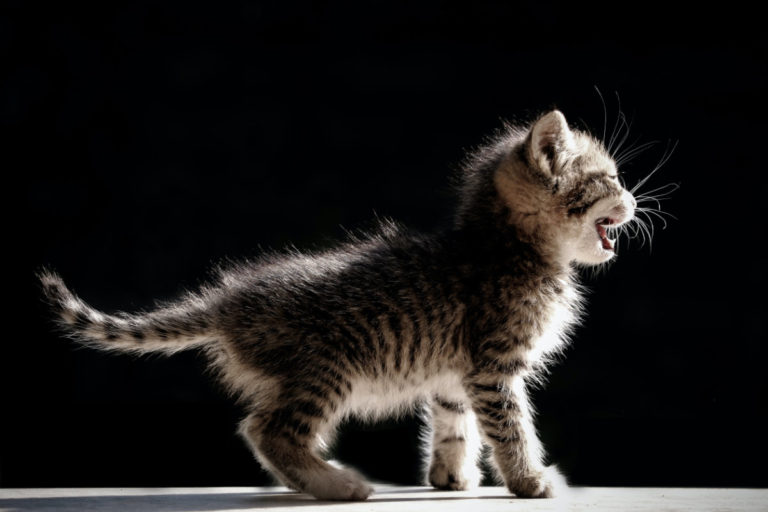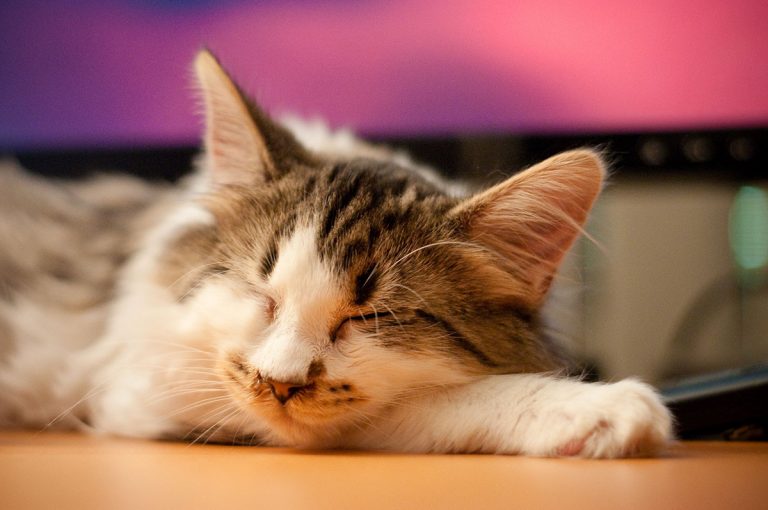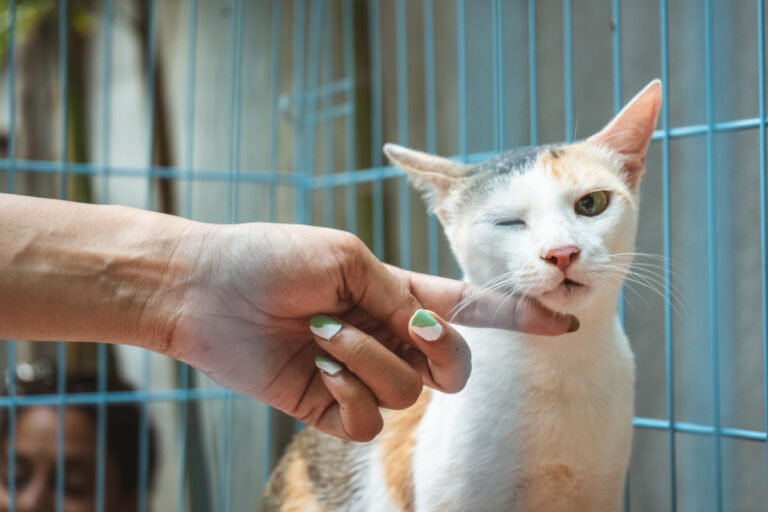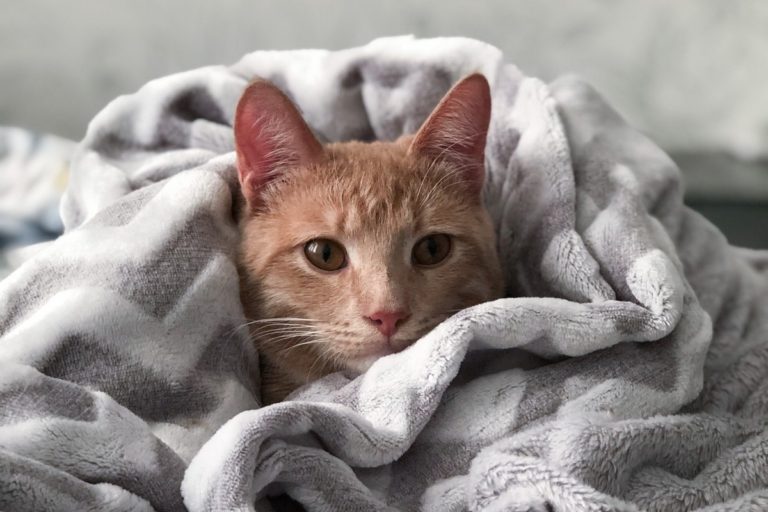More and more pet parents are growing concerned about the impact their pets are having on the environment. In an effort to reduce the carbon footprint of a cat, cat owners are resorting to feeding their cats vegan diets. But can cats survive on a vegan diet? And if not, can cats be vegetarian?
In short: no, cats can’t be vegan or vegetarian. Meatless diets are actually really bad for cats.
Read this article to learn more about the risks associated with vegan diets for cats and why cats can’t be vegan or vegetarian.
DISCLAIMER: This post may contain affiliate links. If you click one of these links and decide to make a purchase, we may receive a small commission. This comes at no extra cost to you and helps to keep the site alive and up to date. If you want more information, please review our Privacy Policy. Thank you for your support!
Can Cats Survive On A Vegan Diet?
PETA, the American animal rights organization, claims on its website that both dogs and cats can survive on a vegan diet. Not only that, according to them and their sources our cats can actually thrive on them. In their article, they refer to a review of studies into animal nutrition and state that there is no difference in the perceived health between cats and dogs on traditional diets versus those on vegan or vegetarian diets.
One thing they fail to mention or take into account is the distinction between perception and reality. A cat may appear healthy on the outside, while they are actually ill or diseased on the inside. As long as no tests are done and no diagnosis is made, any animal is essentially in perceived good health.
And the truth is that a fully vegetarian or vegan diet won’t immediately kill your cat. So, technically speaking, cats can survive on a vegan diet for a little while. But that doesn’t mean they should. In fact, forcing a cat to survive on a vegan or vegetarian diet goes against everything we know about healthy cat care and can easily be considered animal abuse.
Why Cats Can’t Be Vegan
Cats are obligate carnivores. Their metabolism is fully designed to digest meat from muscles, tendons and organs. Consequently, they do not have the enzymes and bacteria needed to properly digest plant-based foods and extract nutrients from them. Their kidneys and gut are also less suited for filtering out the waste products from plant-based materials compared to those from meat and become more damaged over time.
If your cat doesn’t get the nutrients they need from their food, they start using up the energy stored in their own muscles and body fat. Cats on a vegan diet waste away quickly and become very skinny. They also commonly develop digestive disorders.
Digestive problems in cats almost always affect their skin and coat too. Cats with nutritional deficiencies tend to have a matte looking coat and dry, flaky skin. The longer cats are deprived of animal food sources, the mangier they will look. Eventually, they will succumb to the effects of chronic underfeeding and die before their time.
Related Post: Complete Guide To Feline Nutrition: What Should I Feed My Cat?
Ever wondered: "What should I feed my cat?" Read our complete guide on feline nutrition to learn about the best diet for your cat.Can Cats Be Vegetarian?
Some vegan cat owners resort to supplementing their vegan cat diet with eggs, making it vegetarian instead of vegan. While eggs are an animal-based ingredient and full of protein, they are no substitute for actual meat when it comes to cat nutrition. Moreover, eggs are a known allergen, so you could actually be making matters worse by introducing these into your cat’s diet.
The inescapable truth is that cats need meat, therefore they cannot be vegetarian or vegan.
What Is The Carbon Footprint Of A Cat?
One of the biggest motivations for pet owners to reduce their pets’ meat consumption is to fight climate change by reducing their carbon footprint. A carbon footprint is the total strain someone or something puts on the environment in the form of greenhouse gas emissions. People are coming up with all sorts of ways to limit their footprint, and vegan pet food is one of them.
In order to determine whether this is a viable solution, it is important to consider how big the carbon footprint of a cat actually is. Is it big enough to warrant such an unnatural counteract? Or are we unnecessarily shifting our burden onto our cats?
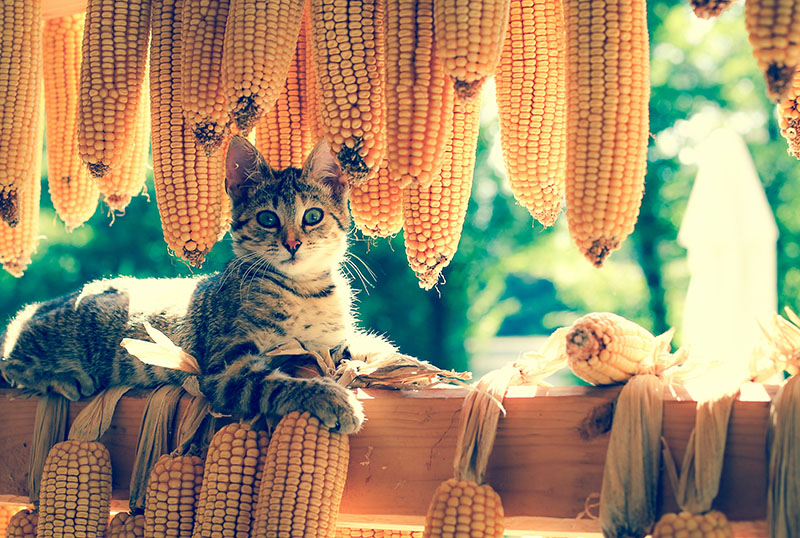
Environmental Impact Of Cat Food
In terms of environmental impact, pet food is definitely the biggest contributor to the carbon footprint of a cat. You need lots of land to raise animals and grow crops, factories to process the ingredients into pet food, warehouses and trucks to distribute it across the country and overlit, air conditioned supermarkets for us to buy it in. Per cat, this averages to about 310 kilograms of CO2e each year. So, in that respect, vegan pet parents are on the right track.
That being said, pet food is such a burden on the environment because of the ingredients and production processes we humans have decided to use for it. And, in most cases, those ingredients and production processes result in less than healthy pet foods. Never in the history of the world have cats demanded that we do all this. In reality, your cat would likely be happier with a live or freshly caught mouse from your own basement. Can we really hold them accountable for our choices by depriving them of all meat?
Environmental Impact Of Cat Litter
Another area where having a cat impacts the environment is their litter box. Most cat owners use a clumping litter, because it absorbs odor, doesn’t track and makes cleaning the litter box relatively effortless. Unfortunately, these convenient qualities require materials and chemicals that make these types of litter unrecyclable. They end up in a landfill and just sit there, forever. Add to that the plastic litter box liners we’ve all grown accustomed to and you can see how the problem might grow out of hand.
Yet again, this shows how our choices impact our pets’ carbon footprint.
How To Reduce The Carbon Footprint Of A Cat
Reducing a cat’s carbon footprint starts with recognizing how your choices affect their environmental impact. The next logical step is to make better choices based on sustainability instead of convenience, without compromising your cat’s health.
Buy Sustainably Sourced Cat Food
Most of us buy our cat food at our local supermarket and assume that their selection is all we have to choose from. That couldn’t be farther from the truth. Most of the brands you find at the grocery store are among the worst cat foods out there and more akin to fast food than actual food. But if you look a bit further, at specialist pet stores and online, you can find countless more options that are not only better for your cat’s health, but also better for the environment.
Try to find out where your pet food manufacturer gets their ingredients from, where their factories are located and, in case you are ordering it online, where it ships from. The key to minimizing the carbon footprint, is to choose a cat food where all of these lines are relatively short. The less traveling your cat food and its ingredients have to do, the better.
Don’t forget to check the origins of the non-meat ingredients in your cat’s food. Pet food manufacturers will add the craziest things and convince us it’s a superfood for cats. Setting aside the speculative nature of the bulk of those claims, they often concern less common ingredients that can’t be sourced locally.
Additionally, you can make better choices in terms of the ingredients you will accept in your cat’s food. Beef, for instance, has a big impact on the environment due to the amount of resources required to raise cattle and the amount of methane cows produce. Poultry and fish are better choices, although these aren’t exactly emission-free either.
Nevertheless, chicken is the best choice for cats, both in terms of its environmental impact and its nutritional profile. And in general, a smaller variety of ingredients adds up to a smaller carbon footprint.
Make Your Own Cat Food
The most sustainable way of feeding your cat is to make your own cat food from locally sourced ingredients. If you make your own cat food, you know exactly what your cat is ingesting. You can finetune your cat’s diet to their exact needs, while keeping its environmental impact at a minimum.
Keep in mind, though, that you will need to supply your cat with a combination of raw muscle meat, organs and even bone to keep them healthy. You will also need to give them nutritional supplements in specific dosages to balance out their diet.
This requires special equipment, impeccable hygiene and specialist knowledge. Not to mention the time and effort that goes into actually making the food. Making your own cat food is definitely not for everyone. But if you know what you are doing, you can make a serious dent in your cat’s carbon footprint.
Use Recyclable Cat Litter
Instead of using a clumping litter, switch to a natural cat litter that you can put in the recycling bin, like Purina Yesterday’s News. You will likely need to make some compromises on either tracking or odor absorption. And, depending on your setup, it might take you a bit longer to properly clean the litter box from now on. But you will be making strides towards a more carbon-neutral existence for your cat.
To help yourself, you can buy compostable litter box liners to put under your new litter. Or take it a step further and use recyclable litter boxes. These arguably don’t hold up as well as regular ones, but that will just force you to clean the litter box more often. Another win for your cat.
Related Post: Top 5 Best Non Tracking Cat Litter
Are you tired of finding cat litter on your floor, on your sofa and in your bed? Learn what you can do about it and what is the best non-tracking cat litter.Don’t Have A Cat
If you are truly concerned about your own carbon footprint plus that of your pets, or you are otherwise ideologically opposed to feeding cats and dogs the meat they need, then the best solution for you is simply to not have pets. That may not be what you want to hear, but it is the truth.
When you take in a pet, you take on the responsibility of caring for them. That means that you do whatever you can, within your means, to give them the best life possible. Part of that is recognizing that animals are different from us. They have their own needs, emotions and behaviors. What is good for us, isn’t necessarily good for them. Inevitably, there is a lot of compromise involved with taking care of pets.
If you aren’t willing to compromise your own views or lifestyle in favor of your cat and their health, then you essentially have no room in your life for that cat. We normally don’t encourage rehoming adult domestic cats, but in this case it is better for both of you to go your separate ways. Perhaps you can find a non-vegan friend willing to adopt your cat. That way you won’t have to say goodbye forever.
Final Thoughts
Vegan cat diets sound like the perfect solution for reducing the carbon footprint of a cat. However, it is solving a problem that was created by humans in a way that is harmful to cats. Doing that means we have learned nothing from the climate mistakes we are trying to correct with it.
Cats are their own creatures, with their own needs and inner workings. We should always respect that and not force them to adapt to us. Cats need meat, there is no way around that. So, cats can’t be vegan, no matter how much you may want them to be. Still, there is a lot you can do to reduce the carbon footprint of a cat, but take into account that it will likely require some effort on your part.


